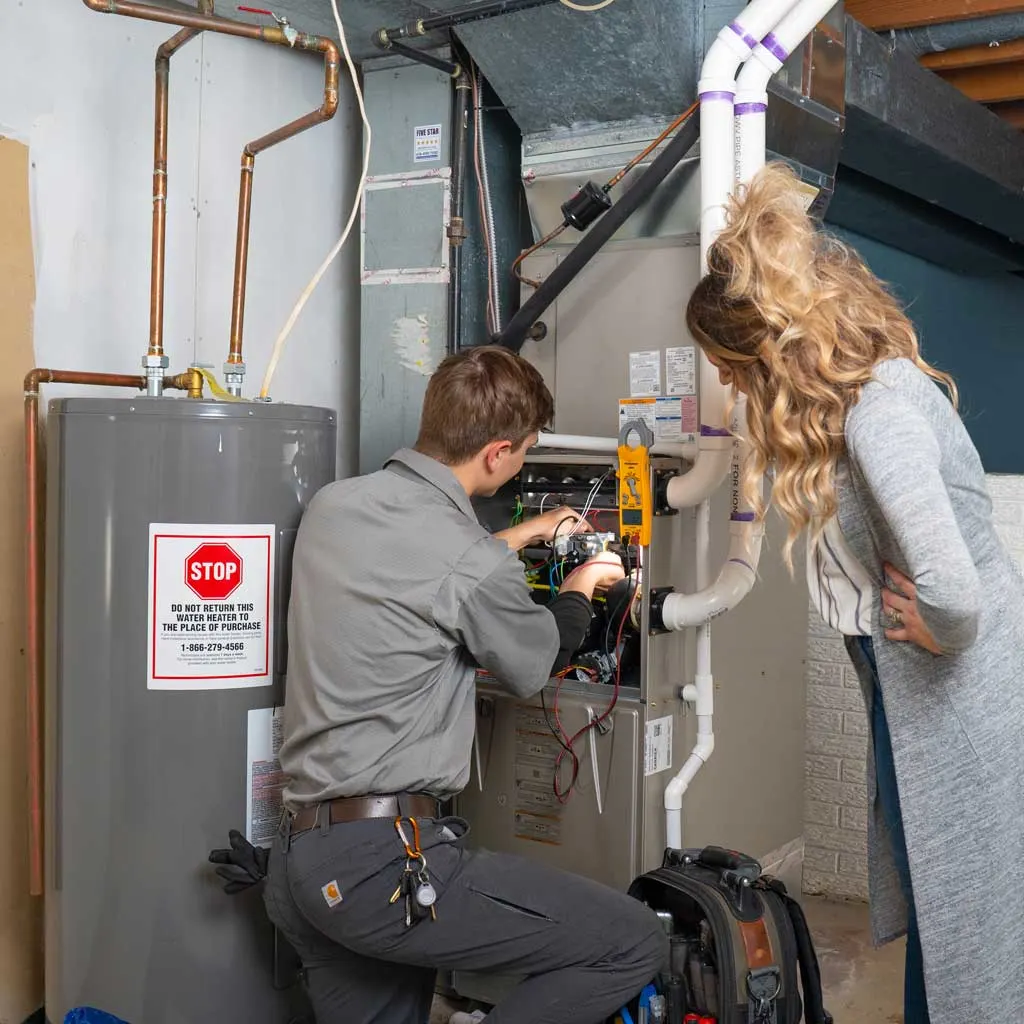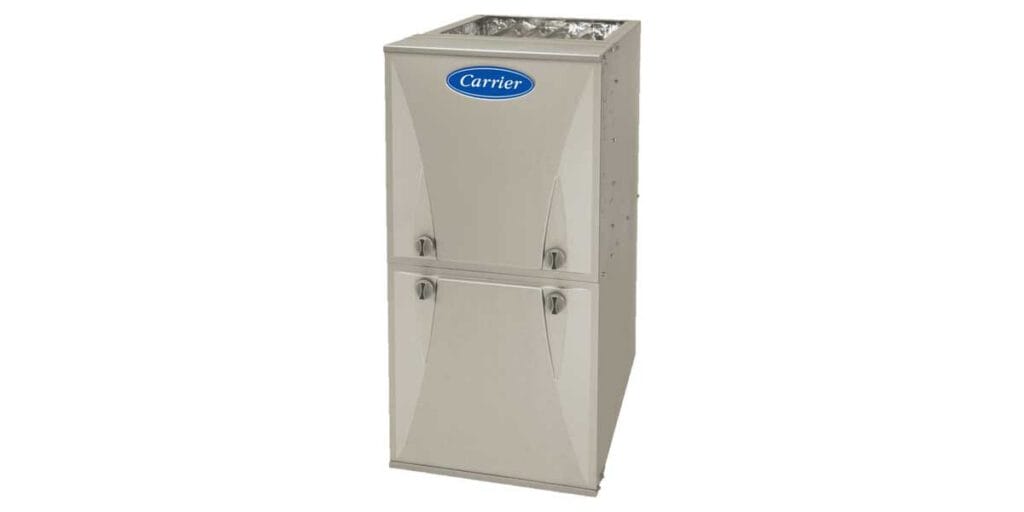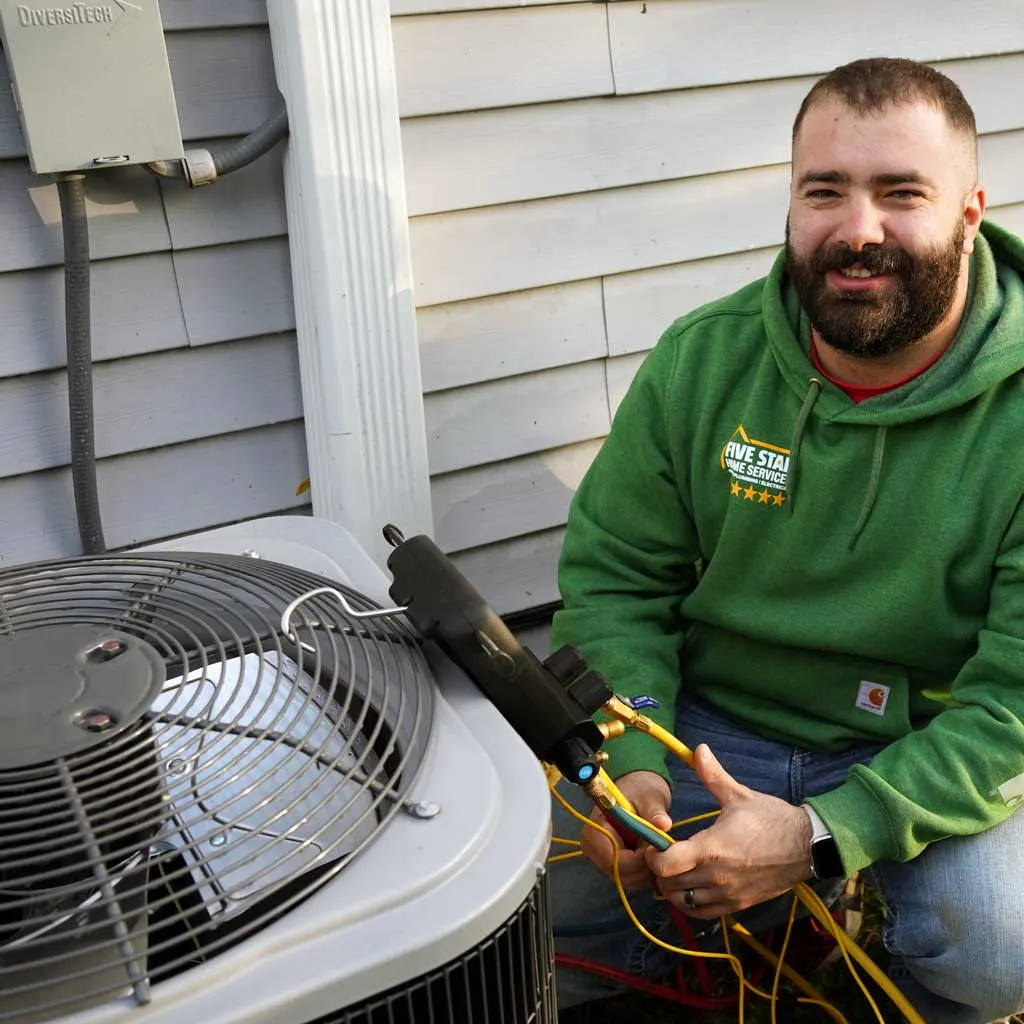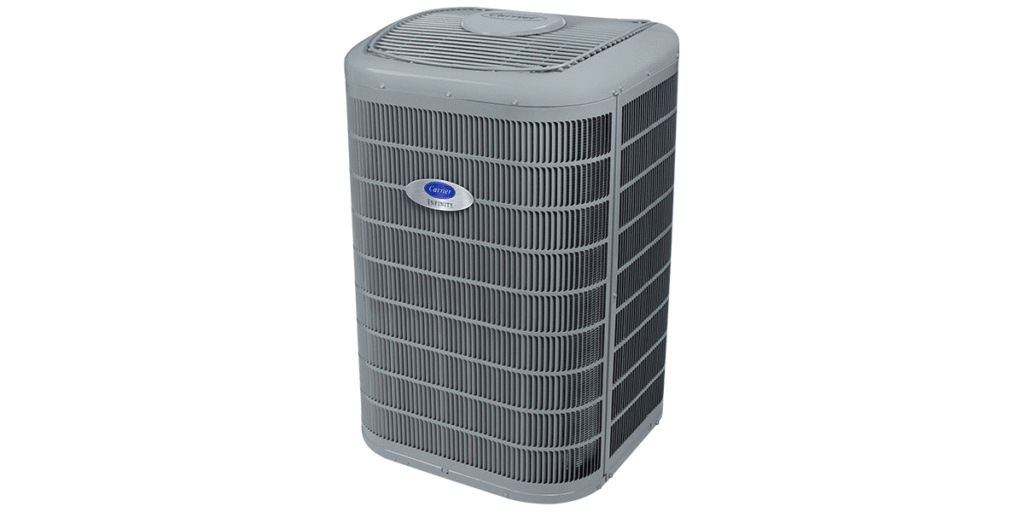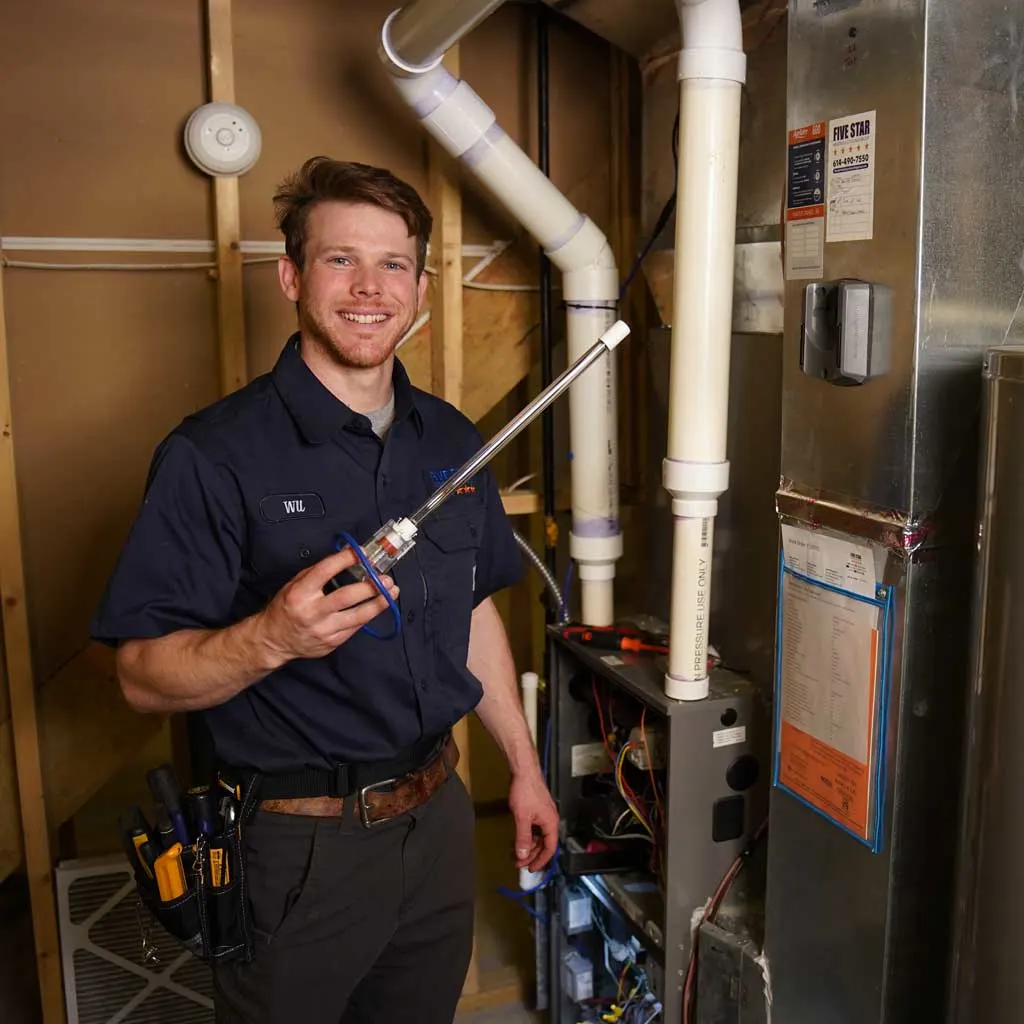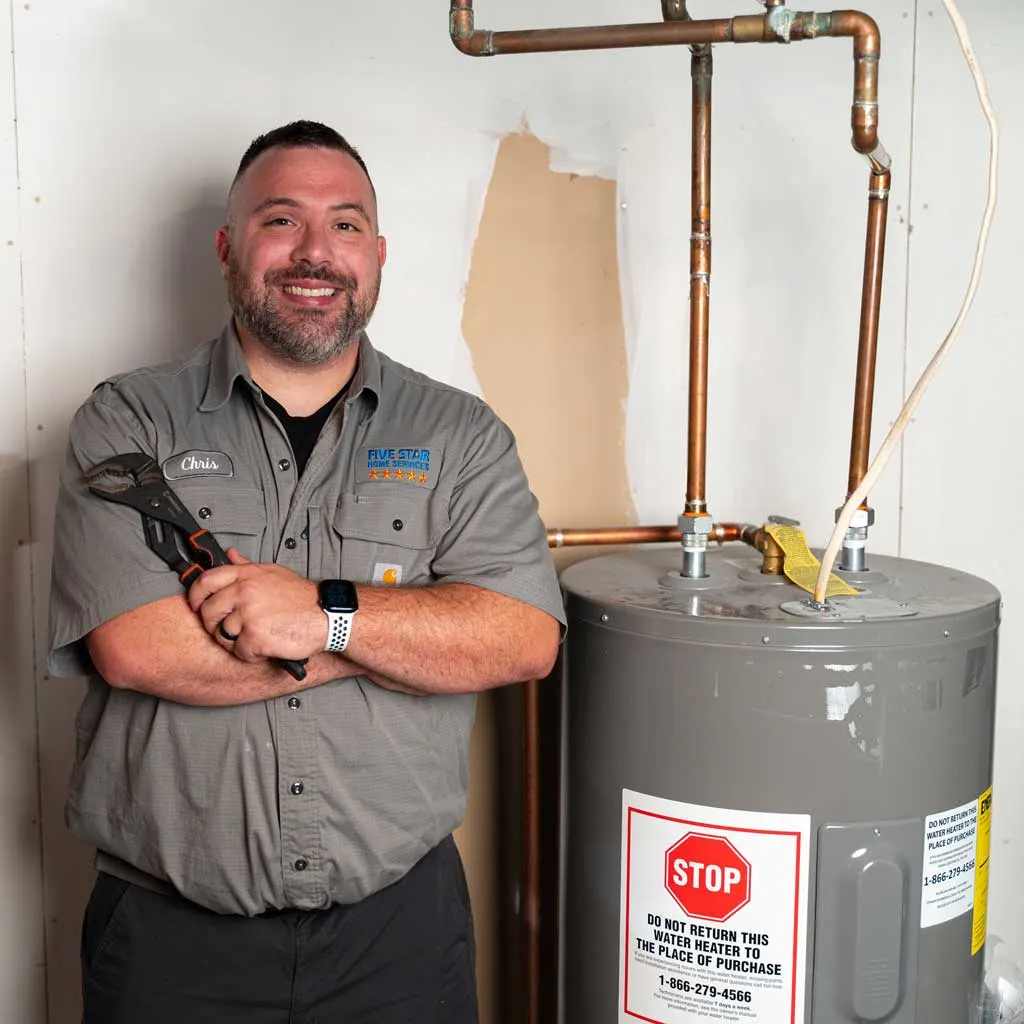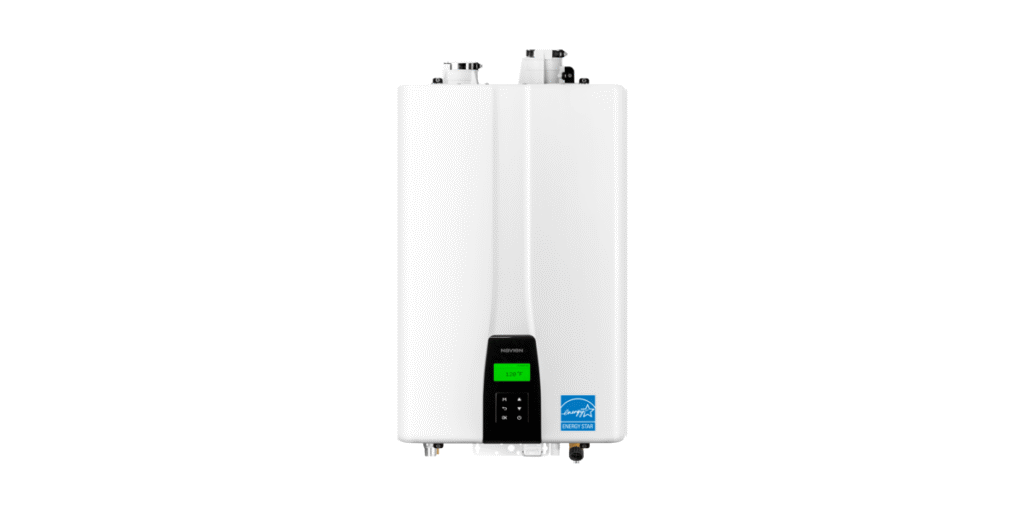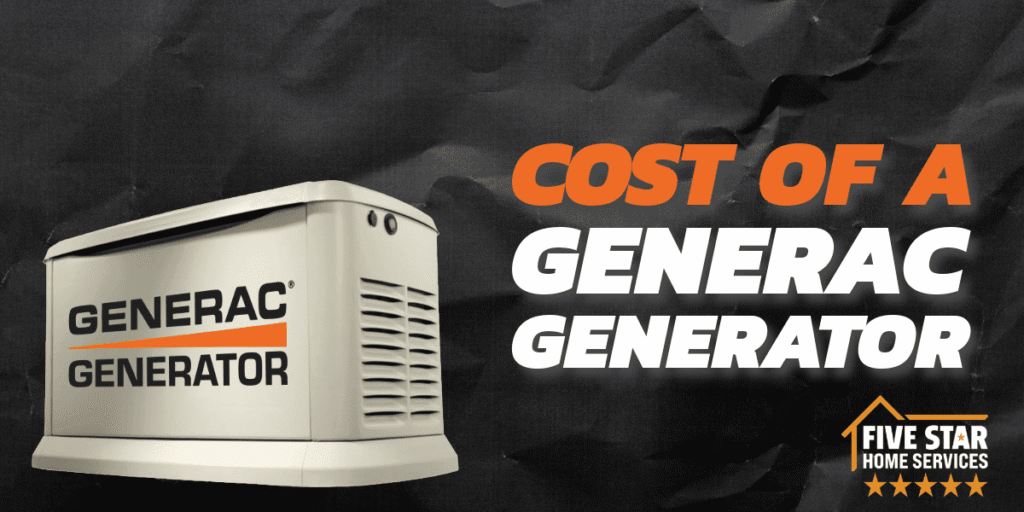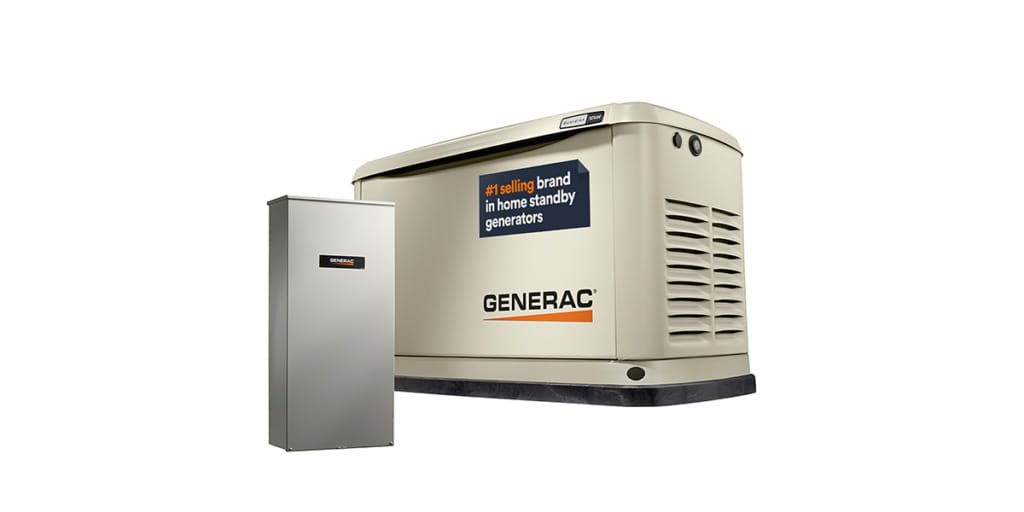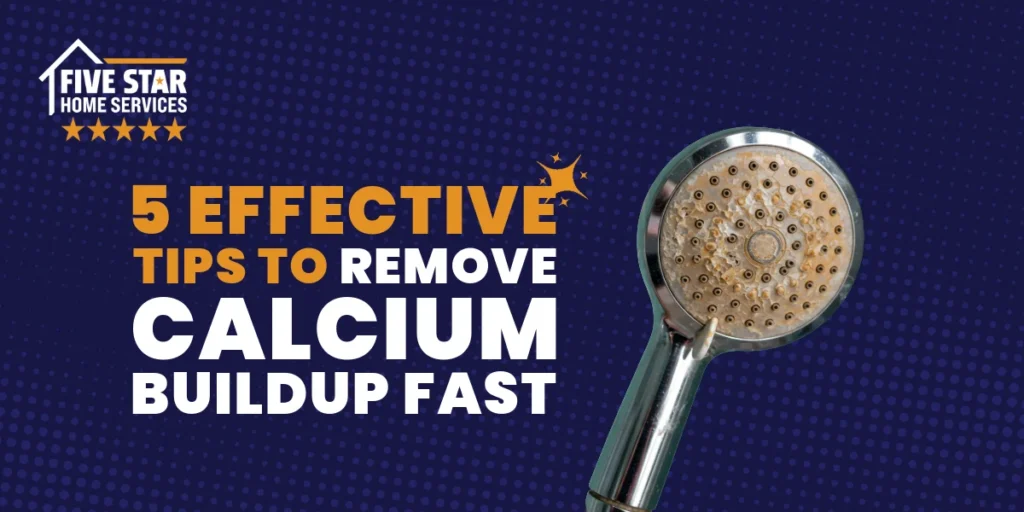Struggling with white, chalky buildup on your faucets or showerheads? This guide shares 5 effective tips to remove calcium buildup and prevent hard water damage in your Ohio home. Learn how simple household solutions and long-term water treatments can keep your fixtures sparkling and your water flowing.
If you’re looking to remove calcium buildup from your faucets and showerheads, your local Ohio plumbing experts at Five Star Home Services have five proven tips to restore your fixtures to a sparkling clean finish. Simple household solutions like white vinegar, muriatic acid (used with caution), lemon juice, and CLR, combined with thorough rinsing and polishing, can effectively tackle stubborn limescale.
For a long-term solution, regularly polishing your fixtures and installing a water softener can prevent future buildup, protect your home from hard water damage, and keep your water pressure strong.

What Causes Calcium Buildup on Faucets and Showerheads?
First, understanding calcium deposits and how they form is essential. Calcium deposits, also called limescale, happen when water containing dissolved calcium salt passes through your showerheads and faucets. When this happens, you will notice a white, crusty-looking accumulation that might just seem impossible to eliminate.
So, is this a problem in Ohio?
The short answer is yes. Calcium deposits, often seen as white, chalky buildup on faucets and showerheads, are a common problem for Ohio homeowners due to the state’s hard water. Much of Ohio, including Columbus, Dayton, and Cincinnati, has water with high levels of calcium and magnesium, which leads to limescale formation in plumbing and on fixtures.
Over time, these deposits can reduce water flow, leave unsightly stains, and even shorten the lifespan of water heaters, dishwashers, and other appliances by causing them to work harder. Beyond the inconvenience, hard water can also lead to higher energy bills, increased cleaning needs, and dry skin or hair. As a result, hard water can lead to significant financial costs through plumbing repair and replacement services. Addressing calcium buildup with regular cleaning and long-term solutions, like installing a water softener, is key to protecting Ohio homes from the costly effects of hard water.
Just like you, there are many Ohio homeowners who face the constant battle of scrubbing away white, chalky buildup from their faucets and showerheads, but one Columbus resident saw firsthand how quickly a water softener can make a difference.
“We were constantly scrubbing white, chalky buildup off our faucets and showerheads, and it felt like a losing battle. After Five Star installed a water softener in our Columbus home, the limescale disappeared within weeks! Our water pressure improved, and our bathroom fixtures look brand new.” – Megan, Columbus, OH
Take the first step toward softer, cleaner water! Explore the best hard water solutions for your home.
What are Some Tips to Remove Calcium Buildup on Faucets & Showerheads?
The good news is that you don’t need expensive tools or harsh chemicals to remove calcium buildup yourself. With a few simple home remedies and cleaning solutions, you can restore your fixtures to a like-new shine and keep your water flowing smoothly.

1. How Do You Remove Calcium Buildup from Faucets & Showerheads with Vinegar?
The first step involves pouring white distilled vinegar into a plastic bag and placing a rubber band around your showerhead or faucet. You might want to wrap the rubber band twice to ensure a tight fit against the water pipe or faucet. Next, attach the bag to the showerhead by carefully slipping the bag’s edge under the rubber band.
You’ll want to let the bag remain overnight. In the morning, you can take off the bag and turn on the water to rinse any residue. Then use a soft cloth to polish your faucet or showerhead.
Vinegar is so effective against calcium deposits because these deposits, like limescale, are created from calcium carbonate, which is broken down by the acid in vinegar.
Another great tip for vinegar usage if the idea of handling a bag of vinegar seems messy, consider soaking a towel in a vinegar solution instead. Wrap the vinegar-soaked-towel around your faucet or showerhead. Leave it overnight and rinse your faucet or showerhead with plain water the next morning.
2. Is Muriatic Acid Safe to Clean and Remove Calcium Buildup on Faucets & Showerheads?
Muriatic acid is a potent cleaning agent for tackling calcium accumulation, albeit one that should be used with caution. After all, muriatic acid is a diluted version of hydrochloric acid, making it one of the most corrosive cleaners available. If you are not cautious, it can severely damage your eyes, skin, and any unprotected painted surfaces.
However, if you adhere to safety precautions, you will find that muriatic acid is an effective solution for calcium buildup. Just make sure that you are wearing protective gloves and goggles. In addition, working in a well-ventilated space is a must or alternatively use a respirator.
- When mixing muriatic acid with water, always remember to add the acid to the water. Doing the reverse could result in a reaction causing acid to splatter over you. Similarly, you should never add acid to an empty vessel.
- After you are done cleaning the calcium buildup, dispose of the cleaning solution by pouring it into a large container of clean water. Aim for a dilution ratio of 50:1. The diluted acid can then be safely drained away.
3. Can Lemon Juice Remove Calcium Buildup Deposits from Faucets & Showerheads?
Just as the acids in vinegar counteract the calcium carbonate in calcium buildup, so do the acids in lemon. This is another potent yet natural solution.
- Start by cutting a fresh lemon in half. Use a device of your choice to open up the center of the lemon. Place the lemon onto the edge of the faucet, wrap a small plastic bag around the lemon, and use a rubber band to secure it in place. Let the lemon stay overnight to allow the citric acid to do its work.
- The next morning, use a gentle scrubbing pad to remove any hard water buildup. A damp cloth can be used to clean any residual lemon juice. Your faucet should be sparklingly clean, and best of all, you didn’t need to utilize harsh chemicals.
4. Does CLR Work to Remove Calcium Buildup and Hard Water Stains?

CLR is a trusted option for tackling tough calcium buildup and hard water stains on faucets and showerheads. This popular cleaner is designed to dissolve limescale, calcium, and rust quickly, helping restore your fixtures without hours of scrubbing. As always, be sure tp follow the manufacturer’s instructions carefully and test it on a small area first.
- To apply CLR, mix equal parts of warm water and CLR in a well-ventilated area. You can apply CLR directly to your faucet or showerhead. Always test CLR in a small area before applying it to a large surface.
- Avoid leaving CLR for more than two minutes on any area. Remember, it should never be mixed with bleach or household cleaners. Lastly, you should also be wary of it contacting carpets, natural stones, galvanized metals, painted surfaces, and clean up spills immediately.
5. How Can You Prevent Calcium Buildup in Your Home’s Water?
The best way to prevent calcium buildup in your home is to stop it at the source. Hard water is full of minerals like calcium and magnesium, which is the root cause of those stubborn white stains on faucets and showerheads. By installing a water softener or other water treatment solution, you can protect your plumbing, keep fixtures looking new, and enjoy cleaner, softer water every day.
Want to stop calcium buildup at the source? Schedule your free water quality test today to see if a water softener is right for your Ohio home.
Who Fixes Hard Water Problems in Ohio?
When hard water starts leaving its mark on your home, the best solution is to call in local experts who understand Ohio’s water challenges. Five Star Home Services can do just that. We have been helping homeowners in Columbus, Dayton, and Cincinnati protect their plumbing, improve water quality, and eliminate limescale for over 50 years. From professional water testing to installing water softeners, filtration systems, and reverse osmosis solutions, our team is here to make hard water a problem of the past.

By using simple cleaning methods like vinegar or CLR with long-term solutions such as water softeners or other water treatment systems, you can protect your fixtures, improve water flow, and keep your home looking its best. Calcium accumulation is inevitable if you live in a region with hard water. However, by installing a water softener, the water from your faucet will be soft, meaning magnesium and calcium will be removed before entering your plumbing system.
Are you ready to tackle that annoying calcium buildup in your home? We are standing by and ready to help! As a certified HVAC and plumbing service contractor based in Ohio, we’ve assisted homeowners and business owners since 1972.
Just call Five Star at (833) 405-8009 or book your appointment online now and get back to enjoying cleaner, better water – fast.
FAQs
1. What causes calcium buildup on faucets and showerheads?
Calcium buildup, also known as limescale, happens when hard water flows through your plumbing and leaves behind minerals like calcium and magnesium. Over time, this creates a white, chalky crust that can restrict water flow and damage fixtures.
2. How can I remove calcium buildup naturally?
One of the easiest natural methods is using white vinegar or lemon juice. Simply soak the faucet or showerhead (or wrap it with a vinegar-soaked cloth) overnight to dissolve the mineral deposits. In the morning, rinse and gently scrub the area clean.
3. How do I prevent calcium buildup from coming back?
The best way to prevent limescale is to treat hard water at the source. Installing a water softener or reverse osmosis system removes excess minerals, keeping your faucets, showerheads, and plumbing free of buildup long-term.
4. Is calcium buildup a problem for Ohio homeowners?
Yes, calcium buildup is common in Ohio because much of the state has hard to very hard water. Without treatment, mineral deposits can damage fixtures, reduce water pressure, and shorten the lifespan of appliances like water heaters and dishwashers.



